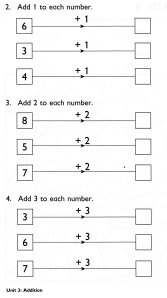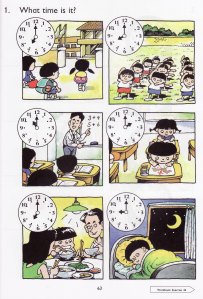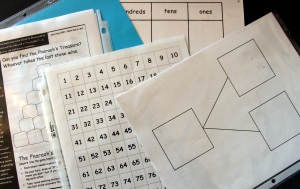Singapore Math U.S. v. Standards edition
When I was in Singapore two years ago, Marshall Cavendish unveiled the new primary Mathematics Standards edition materials and there were murmurs of concern throughout the room. The general consensus was that the books looked too big; they must have added so much material that the series will look just like any American curriculum. There are added pages and concepts. Schools and homeschooling families that have a choice (sorry California, no choice for you) will want to review the materials thoroughly before purchasing.
Let’s back up a bit. Why did Marshall Cavendish/SingaporeMath.com decide to create the Standards edition? From the SingaporeMath.com website:
Primary Mathematics Standards edition is an adaptation of Primary Mathematics to meet the Mathematics Contents Standards for California Public Schools, adopted by the California State Board of Education in 1997 for grades 1-5 as one of the approved textbooks. It is similar to the US edition but has some rearrangement of topics and some added units, primarily in probability and data analysis, negative number, and coordinate graphing.
A side-by-side comparison of the scope and sequence of the two curricula appears on the SingaporeMath.com website. Of note, there are Extra Practice books for both series as well as Teacher Guides. Home Instructor Guides are available for the U.S. edition and the following Standards edition levels: 1A, 1B, 2A, 2B, 3A and 3B. 4A will be available in the summer of 2009. The Standards edition has comprehensive tests books for each level. Although the distributors state that materials are not interchangeable between the editions, anyone willing to do a bit of work will find that the test books can be adapted to the U.S. materials. If you enjoy this overview and would like to see one for another grade level, feel free to email me.
Prompted by a comment by Ali in VA, I took a look, book-by-book, at the 1st grade materials and found a few differences. Please do not make your decision on edition based on just the 1st grade materials. The curriculum is sequential, and spirals with mastery. I would not, therefore, advise jumping between the two different editions.
Minor changes to the series include the numbering of units in the textbook and exercises in the workbook. I believe that it organizes the materials better for teachers. Added to each of the textbooks are a glossary and index. Added to each workbook are 33 pages of Math at Home activities. Pictures have been used occasionally in place of clip art, a few names have been changed, color added, number bonds are now circles, not squares, etc. Starting with the unit Numbers to 40, the colors on the place value strips have been standardized. Ten strips are always pink, ones are blue. (You can purchase Place Value Strips or make your own from sentence strips.)
More important changes include the addition of concepts. The following concepts were added in the first grade textbooks with complementary additions for practice in the workbook exercises and reviews.
1A Units:
- Position & Direction -lesson has been added to the unit on Ordinal Numbers.
- Shapes –lesson has been added that focuses on vocabulary: flat, stack, roll, slide, corners, sides.
- Capacity – three lessons on comparing and measuring in non-standard units.
1B Units:
- Graphs – Lesson on tally charts and bar diagrams has been added.
- Numbers to 40 – lesson on counting by 2’s.
- Time – two lessons: Before & After & Estimating Time.
- Numbers to 100 – one lesson on addition with the vertical algorithm, one with subtraction (without renaming).
Now, having gone though through all four books, literally page-by-page, I could ONLY find one page in the U.S. edition that was omitted from the Standards edition.
Additions and eliminations duly noted, here are a couple of quirky difference between the editions.
Two pages from the same exercise – U.S. edition on the left, Standards on the right.
And two pages from the textbook. U.S. edition on the left, Standards on the right.
Finally, it looks like school starts 2 hours later in the Standards edition. Again U.S. edition on the left, Standards on the right.






















